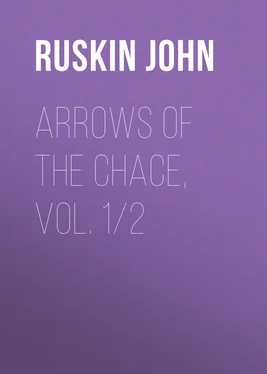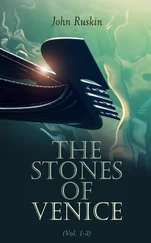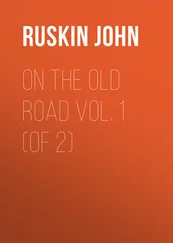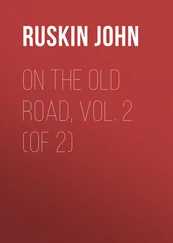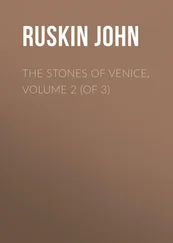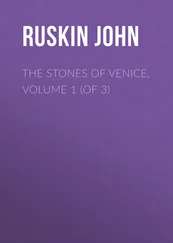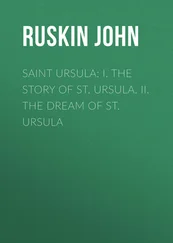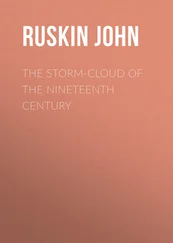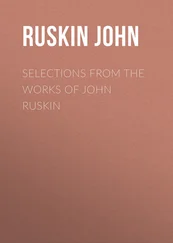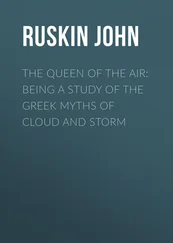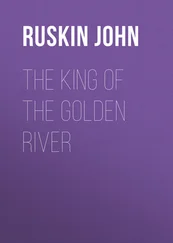John Ruskin - Arrows of the Chace, vol. 1/2
Здесь есть возможность читать онлайн «John Ruskin - Arrows of the Chace, vol. 1/2» — ознакомительный отрывок электронной книги совершенно бесплатно, а после прочтения отрывка купить полную версию. В некоторых случаях можно слушать аудио, скачать через торрент в формате fb2 и присутствует краткое содержание. Жанр: Биографии и Мемуары, literature_19, foreign_antique, на английском языке. Описание произведения, (предисловие) а так же отзывы посетителей доступны на портале библиотеки ЛибКат.
- Название:Arrows of the Chace, vol. 1/2
- Автор:
- Жанр:
- Год:неизвестен
- ISBN:нет данных
- Рейтинг книги:5 / 5. Голосов: 1
-
Избранное:Добавить в избранное
- Отзывы:
-
Ваша оценка:
- 100
- 1
- 2
- 3
- 4
- 5
Arrows of the Chace, vol. 1/2: краткое содержание, описание и аннотация
Предлагаем к чтению аннотацию, описание, краткое содержание или предисловие (зависит от того, что написал сам автор книги «Arrows of the Chace, vol. 1/2»). Если вы не нашли необходимую информацию о книге — напишите в комментариях, мы постараемся отыскать её.
Arrows of the Chace, vol. 1/2 — читать онлайн ознакомительный отрывок
Ниже представлен текст книги, разбитый по страницам. Система сохранения места последней прочитанной страницы, позволяет с удобством читать онлайн бесплатно книгу «Arrows of the Chace, vol. 1/2», без необходимости каждый раз заново искать на чём Вы остановились. Поставьте закладку, и сможете в любой момент перейти на страницу, на которой закончили чтение.
Интервал:
Закладка:
The letters are reprinted word for word, and almost stop for stop, from the newspapers and other pages in which they first appeared. To ensure this accuracy was not an easy matter, and to it there are a few intentional exceptions. A few misprints have been corrected, such as that of “Fat Bard” for “Fort Bard” (vol. i. p. 147): and now and then the punctuation has been changed, as on the 256th page of the same volume, where a comma, placed in the original print of the letter between the words “visibly” and “owing,” quite confused the sentence. To these slight alterations may be added others still less important, such as the commencement of a fresh paragraph, or the closing up of an existing one, to suit the composition of the type, which the number of notes rendered unusually tiresome. The title of a letter, too, is not always that provided it by the newspaper; in some cases it seemed well to rechristen, in others it was necessary to christen a letter, though the former has never been done where it was at all possible that the existing title (for which reference can always be made to the bibliography) was one given to it by Mr. Ruskin himself.
The classification of the letters is well enough shown by the tables of contents. The advantages of a topical over a chronological arrangement appeared beyond all doubt; whilst the addition to each volume of a chronological list of the letters contained in it, and the further addition to the second volume of a similar list of all the letters contained in the book, and of a full index, will, it is hoped, increase the usefulness of the work.
The beautiful engraving which forms the frontispiece of the first volume originally formed that of “The Oxford Museum.” The plate was but little used in the apparently small edition of that book, and was thus found to be in excellent state for further use here. The woodcut of the chestnut spandril (vol. i. p. 144) is copied from one which may also be found in “The Oxford Museum.” The facsimile of part of one of the letters is not quite satisfactory, the lines being somewhat thicker than they should be, but it answers its present purpose.
Lastly, the chief difficulty of editing these letters has been in regard to the notes, and has lain not so much in obtaining the necessary information as in deciding what use to make of it when obtained. The first point was, of course, to put the reader of the present volumes in possession of every fact which would have been common knowledge at the time when such and such a letter was written; but beyond this there were various allusions, which might be thought to need explanation; quotations, the exact reference to which might be convenient; and so forth. Some notes, therefore, of this character have been also added; whilst some few which were omitted, either intentionally or by accident, from the body of the work, may be found on reference to the index. 3 3 Some of the notes, it will be remarked, are in larger type than the rest; these are Mr. Ruskin’s original notes to the letters as first published, and are in fact part of them; and they are so printed to distinguish them from the other notes, for which I am responsible.
The effort to make the book complete has induced the notice of slight variations of text in one or two cases, especially in the reprint of the St. Mark’s Circular. The space occupied by such notes is small, the interest which a few students take in the facts they notice really great, and the appearance of pedantry to some readers is thus risked in order to meet the special wish of others. The same effort will account for the reappearance of one or two really unimportant letters in the Appendix to the second volume, which contains also some few letters the nature of which is rather personal than public.
I have asked Mr. Ruskin to state in his preface to the book the value he may set upon it in relation to his other and more connected work; and for the rest, I have only to add that the editing of it has been the pleasant labor of my leisure for more than two years past, and to express my hope that these scattered arrows, some from the bow of “An Oxford Graduate,” some from that of an Oxford Professor, may not have been vainly winged anew by
An Oxford Pupil.October, 1880.
LETTERS ON ART
I.
ART CRITICISM AND ART EDUCATION
[From “The Weekly Chronicle,” September 23, 1843.]
“MODERN PAINTERS;” A REPLY
To the Editor of “The Weekly Chronicle.”
Sir: I was much gratified by reading in your columns of the 15th 4 4 It should be 16th, the criticism having appeared in the preceding weekly issue.
instant a piece of close, candid, and artistical criticism on my work entitled “Modern Painters.” Serious and well-based criticism is at the present day so rare, and our periodicals are filled so universally with the splenetic jargon or meaningless praise of ignorance, that it is no small pleasure to an author to meet either with praise which he can view with patience, or censure which he can regard with respect. I seldom, therefore, read, and have never for an instant thought of noticing, the ordinary animadversions of the press; but the critique on “Modern Painters” in your pages is evidently the work of a man both of knowledge and feeling; and is at once so candid and so keen, so honest and so subtle, that I am desirous of offering a few remarks on the points on which it principally touches—they are of importance to art; and I feel convinced that the writer is desirous only of elucidating truth, not of upholding a favorite error. With respect first to Gaspar’s painting of the “Sacrifice of Isaac.” It is not on the faith of any single shadow that I have pronounced the time intended to be near noon 5 5 See “Modern Painters,” vol. i. p. 159 (Pt. II. § 2, cap. 2, § 5). “Again, take any important group of trees, I do not care whose,—Claude’s, Salvator’s, or Poussin’s,—with lateral light (that in the Marriage of Isaac and Rebecca, or Gaspar’s Sacrifice of Isaac, for instance); can it be supposed that those murky browns and melancholy greens are representative of the tints of leaves under full noonday sun?” The picture in question is, it need hardly be said, in the National Gallery (No. 31).
—though the shadow of the two figures being very short, and cast from the spectator, is in itself conclusive. The whole system of chiaroscuro of the picture is lateral; and the light is expressly shown not to come from the distance by its breaking brightly on the bit of rock and waterfall on the left, from which the high copse wood altogether intercepts the rays proceeding from the horizon. There are multitudes of pictures by Gaspar with this same effect—leaving no doubt whatever on my mind that they are all manufactured by the same approved recipe, probably given him by Nicholas, but worked out by Gaspar with the clumsiness and vulgarity which are invariably attendant on the efforts of an inferior mind to realize the ideas of a greater. The Italian masters universally make the horizon the chief light of their picture, whether the effect intended be of noon or evening. Gaspar, to save himself the trouble of graduation, washes his sky half blue and half yellow, and separates the two colors by a line of cloud. In order to get his light conspicuous and clear, he washes the rest of his sky of a dark deep blue, without any thoughts about time of day or elevation of sun, or any such minutiæ; finally, having frequently found the convenience of a black foreground, with a bit of light coming in round the corner, and probably having no conception of the possibility of painting a foreground on any other principle, he naturally falls into the usual method—blackens it all over, touches in a few rays of lateral light, and turns out a very respectable article; for in such language only should we express the completion of a picture painted throughout on conventional principles, without one reference to nature, and without one idea of the painter’s own. With respect to Salvator’s “Mercury and the Woodman,” 6 6 See “Modern Painters,” vol. i. pp. 157-8 (Pt. II. § ii., cap. 2, § 4). The critic of the Chronicle had written that the rocky mountains in this picture “are not sky-blue, neither are they near enough for detail of crag to be seen, neither are they in full light, but are quite as indistinct as they would be in nature, and just the color.” The picture is No. 84 in the National Gallery.
your critic has not allowed for the effect of time on its blues. They are now, indeed, sobered and brought down, as is every other color in the picture, until it is scarcely possible to distinguish any of the details in its darker parts; but they have been pure and clean, and the mountain is absolutely the same color as the open part of the sky. When I say it is “in full light,” I do not mean that it is the highest light of the picture (for no distant mountain can be so, when compared with bright earth or white clouds), but that no accidental shadow is cast upon it; that it is under open sky, and so illumined that there must necessarily be a difference in hue between its light and dark sides, at which Salvator has not even hinted.
Интервал:
Закладка:
Похожие книги на «Arrows of the Chace, vol. 1/2»
Представляем Вашему вниманию похожие книги на «Arrows of the Chace, vol. 1/2» списком для выбора. Мы отобрали схожую по названию и смыслу литературу в надежде предоставить читателям больше вариантов отыскать новые, интересные, ещё непрочитанные произведения.
Обсуждение, отзывы о книге «Arrows of the Chace, vol. 1/2» и просто собственные мнения читателей. Оставьте ваши комментарии, напишите, что Вы думаете о произведении, его смысле или главных героях. Укажите что конкретно понравилось, а что нет, и почему Вы так считаете.
